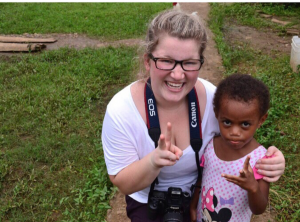
History 3510: The History of Childhood and Education
Main Take-aways
- The definition of childhood is continually changing.
- My definition at the beginning of the semester: young, inexperienced people being taught basic skills that will be utilized later in life.
- My definition at the end of semester: Childhood is a specific age where the person is young and careless and needs guidance. Childhood is being taught but also being able to have fun at the same time ( not always considered “fun” – historically being taught could be understood as less fun). Childhood becomes reaching a specific mature level where one may no longer be considered a child – and reaching this state is different for everyone.
- Definition of Education
- My definition at the beginning of the semester: Understanding of different concepts through oral, hands on or visual interpretation. Sitting in a formal setting and being engaged with what the instructor is telling/teaching.
- My definition at the end of the semester: Teaching can be done in a number of different ways – was not always done in a number of different ways. But how one can be taught is continual changing and the curriculum changes. understanding that there is more that one way knowing is key in education because everyone learns and understands in different ways. So, education is learning through a number of different methods that suits the individual learning.
- Social Control or Social Concern
- When reading historical or present articles I tend to think about whether it is social control or social concern. These two themes have been widely discussed in class – so if I was to say which class discussion has stuck with me the most it would be our continued discussions about social control or social concern. Social control is also what has shaped my research paper on.
- Age as a Category of Analysis
- Age has been widely accepted as a category of analysis.
- Specific age children start school at
- Specific age children begin driving at
- Specific age children are allowed to drink at
- Many categories of analysis when it comes to age. Historically this could be understood through the role of power and hierarchy, as well as legislation – which we discussed in class and allowed me to expand my knowledge on why age has become a category of analysis.
- Age has been widely accepted as a category of analysis.
- Segregation Within School Systems
- This was an interesting topic for me because it relates to my research topic, but it also relates heavily to racism that is persists in present day.
- The class discussion around this topic had lots of information to draw on – “Chinese” within the school system, “blacks” within the school system, “Indians” peoples within the school system. The segregation of those who were not “white” was heavily done in the 1800s and 1900s. At present day there is more equality, considering the past events of segregation. But, I still believe there is a long way to go in terms of equality for all. Whether that will be done or not is an interesting question, that I continually ponder on.
- Health and Children and Education
- What was considered “healthy” and what was considered “unhealthy” was a widely discussed topic.
- Hygiene became important in industrialized areas and within urbanized cities. The importance of hygiene became increasingly important are World War One. There became an expectation for people, especially children attending school to be “clean.”
- Healthy children became important because there was an increase in scientific evidence, that “unhealthy” children were unfit for society. With scientific evidence it was believed that if you child was healthy they would be less likely to get a disease. Therefore, cleanliness was increasing and those who were unhealthy began to be unsuitable in classroom setting.